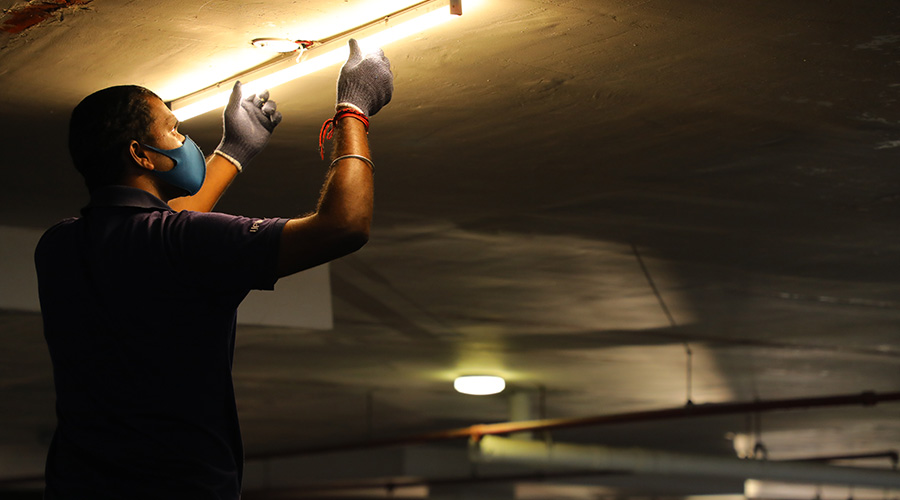Facilities Management Best Practices and Tips for 2024

The development, use, and upkeep of physical spaces and assets inside commercial, industrial, and institutional facilities is a crucial aspect of facility management. To maintain the smooth operation of their facilities as we enter the year 2024, facility managers must stay current on the most recent best practices. In this thorough guide, we will first define facility management before delving into the best facility management techniques to assist you in streamlining your business operations.
What Is Facility Management?
Facility management, commonly referred to as FM, has several facets and encompasses the administration of physical resources, infrastructure, and services to guarantee the effective and secure operation of a facility. This includes a broad range of duties, such as but not limited to:
Space Planning and Allocation: Using space and organising it effectively to meet organisational needs.
Maintenance and Repairs: Ensuring machinery, systems, and buildings are regularly inspected and maintained to avoid malfunctions and minimise downtime.
Energy Management: Putting plans into practise to cut expenses, increase sustainability, and consume less energy.
Safety and Security: By using strong security measures and being prepared for emergencies, inhabitants and assets are kept safe.
Environmental Sustainability: Encouraging environmentally responsible behaviour to lessen the facility’s impact on the environment.
Vendor and Contractor Management: Managing interactions with service suppliers to guarantee high-quality, economical services.
Budgeting and Financial Management: To achieve facilities management objectives, efficiently plan and allocate resources.
Let’s now examine the best practices that facility managers ought to think about putting into practice in 2024 to succeed in their positions.
Best Facility Management Practices for 2024
Regular Facility Inspections
Effective facility management is built on the foundation of frequent facility inspections. These checks ensure the facility’s general safety and well-being by assisting in the early detection of maintenance and safety issues.
Preventive Maintenance Programs
Preventive maintenance programmes are implemented by routinely servicing and maintaining systems and equipment to avoid unplanned breakdowns. Long-term, this strategy can save both time and money.
Energy Efficiency Initiatives
Energy efficiency is a top priority since it lowers operating costs and supports sustainability objectives. Effective tactics include implementing LED lighting, improving HVAC systems, and performing energy audits.
Safety and Security Protocols
It is crucial to have a strong safety and security foundation. To safeguard the building and its occupants, carry out emergency drills, regularly update safety procedures, and spend money on cutting-edge security technologies.
Sustainability Initiatives
Adopting sustainability practises, such as trash reduction, recycling initiatives, and green building guidelines, not only lessens the facility’s impact on the environment but also improves its reputation.
Effective Vendor Management
Create trusting connections with suppliers and contractors, monitor their progress often, and make sure they adhere to the facility’s requirements. Cost-effective
Asset Management Systems
Put in place a thorough asset management system to properly track and maintain all facility assets. This ensures the durability and peak performance of all furnishings, technology, and equipment.
A multidimensional subject known as “facility management” is essential to the effective operation and upkeep of physical assets and spaces within distinct facilities. Adopting best practices in facility management is essential as we head into 2024 if you want to make sure that your facility’s operations are sustainable, secure, and economical. You can improve your facilities management techniques and contribute to the general success of your organisation by implementing the procedures described in this manual. To succeed in the dynamic sector of facility management in the years to come, maintain awareness, initiative, and adaptability.
At UPS Facility Management, we are acutely aware of the critical role that a proactive maintenance approach plays in facility management. Our dedication to perfection motivates us to give priority to preventive measures, ensuring that the facilities of our clients run as efficiently as possible.
Our clients profit from a wide range of benefits as a result of our proactive approach. These include increased equipment dependability, strengthened safety procedures, significant financial efficiencies, increased tenant satisfaction, and an increase in asset longevity. We urge you to look through UPS Facility Management’s extensive products to learn more about our proactive maintenance solutions.
Have any feedback or questions?
Contact us!




